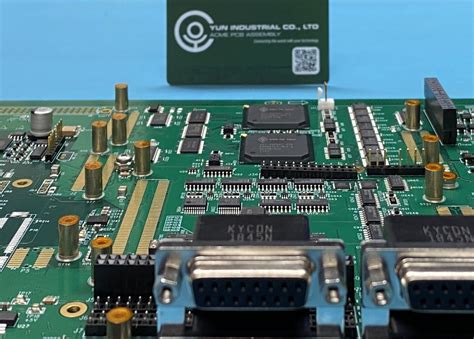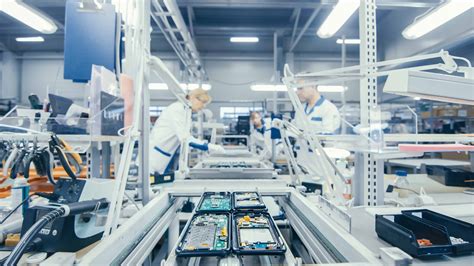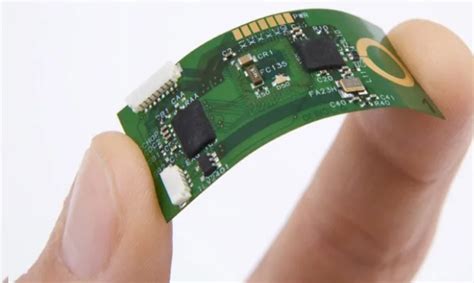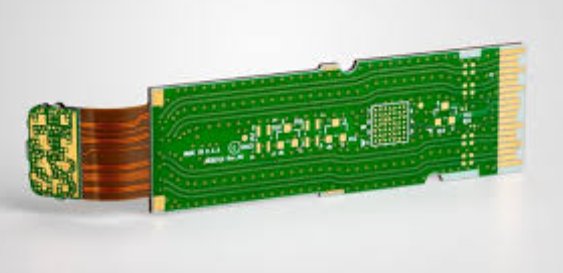PCB Manufacturing Capabilities: A Comprehensive Overview
Printed Circuit Boards (PCBs) are the backbone of modern electronics, serving as the foundation for virtually all electronic devices. From smartphones and computers to medical devices and automotive systems, PCBs enable the interconnection of electronic components, facilitating the flow of electricity and data. As technology advances, the demand for more complex, reliable, and high-performance PCBs has grown exponentially. This article delves into the various capabilities of PCB manufacturing, exploring the processes, materials, technologies, and innovations that define the industry today.
1. Introduction to PCB Manufacturing
PCB manufacturing is a multi-step process that transforms a design concept into a functional circuit board. The process involves several stages, including design, fabrication, assembly, and testing. Each stage requires specialized equipment, materials, and expertise to ensure the final product meets the required specifications and performance standards.
The capabilities of a PCB manufacturer are determined by their ability to handle different types of PCBs, materials, and technologies. These capabilities are often categorized based on the complexity of the boards, the materials used, and the manufacturing processes employed. In the following sections, we will explore these aspects in detail.
2. Types of PCBs and Manufacturing Capabilities
PCBs come in various types, each suited for specific applications. The manufacturing capabilities of a PCB provider are often defined by the types of PCBs they can produce. The main types of PCBs include:
2.1 Single-Sided PCBs
Single-sided PCBs are the simplest type of circuit boards, with conductive copper traces on only one side of the board. These boards are typically used in low-cost, low-complexity applications such as calculators, power supplies, and LED lighting. Manufacturing single-sided PCBs requires basic equipment and processes, making them accessible to a wide range of manufacturers.
2.2 Double-Sided PCBs
Double-sided PCBs have conductive traces on both sides of the board, allowing for more complex circuits and higher component density. These boards are commonly used in consumer electronics, automotive systems, and industrial controls. Manufacturing double-sided PCBs requires more advanced processes, such as through-hole plating and surface mount technology (SMT), to ensure proper electrical connections between the two sides.
2.3 Multi-Layer PCBs
Multi-layer PCBs consist of three or more conductive layers, separated by insulating material. These boards are used in high-complexity applications such as smartphones, computers, and medical devices. The manufacturing of multi-layer PCBs involves laminating multiple layers of conductive and insulating materials, followed by precise drilling and plating to create interconnections between layers. This process requires advanced equipment and expertise, making it a key capability for high-end PCB manufacturers.
2.4 Flexible and Rigid-Flex PCBs
Flexible PCBs are made from flexible materials such as polyimide, allowing them to bend and twist without breaking. Rigid-flex PCBs combine flexible and rigid sections, offering the benefits of both types. These boards are used in applications where space and weight are critical, such as wearable devices, aerospace systems, and medical implants. Manufacturing flexible and rigid-flex PCBs requires specialized materials and processes, including precision laser cutting and flexible soldering techniques.
2.5 High-Density Interconnect (HDI) PCBs
HDI PCBs are designed to accommodate a high number of components in a small area, using advanced techniques such as microvias, fine-pitch traces, and blind/buried vias. These boards are used in high-performance applications such as 5G devices, IoT products, and advanced automotive systems. Manufacturing HDI PCBs requires state-of-the-art equipment and processes, including laser drilling, sequential lamination, and advanced inspection techniques.

3. Materials Used in PCB Manufacturing
The materials used in PCB manufacturing play a critical role in determining the performance, reliability, and cost of the final product. The choice of materials depends on the application, operating environment, and performance requirements. The main materials used in PCB manufacturing include:
3.1 Substrate Materials
The substrate, or base material, provides the structural foundation for the PCB. The most common substrate material is FR-4, a glass-reinforced epoxy laminate that offers a good balance of performance, cost, and availability. For high-frequency applications, materials such as Rogers, Teflon, and ceramic-filled PTFE are used due to their low dielectric loss and high thermal stability. Flexible PCBs typically use polyimide or polyester films as the substrate.
3.2 Conductive Materials
Copper is the most widely used conductive material in PCBs, due to its excellent electrical conductivity and cost-effectiveness. The thickness of the copper layer, measured in ounces per square foot, determines the current-carrying capacity of the traces. For high-power applications, thicker copper layers are used, while thinner layers are suitable for high-density designs. In some cases, other conductive materials such as silver or gold may be used for specific applications, such as high-frequency or high-reliability circuits.
3.3 Solder Mask and Silkscreen
The solder mask is a protective layer applied over the copper traces to prevent short circuits and oxidation. It also provides insulation and improves the durability of the PCB. The most common solder mask material is liquid photoimageable (LPI) epoxy, which is applied using a photolithographic process. The silkscreen is a layer of ink used to print component labels, logos, and other markings on the PCB. It is typically applied using screen printing or inkjet printing.
3.4 Surface Finishes
The surface finish is applied to the exposed copper areas to protect them from oxidation and improve solderability. Common surface finishes include:
- HASL (Hot Air Solder Leveling): A cost-effective finish that provides good solderability but may not be suitable for fine-pitch components.
- ENIG (Electroless Nickel Immersion Gold): A high-quality finish that offers excellent solderability and flatness, making it suitable for fine-pitch components and high-reliability applications.
- OSP (Organic Solderability Preservative): A thin, organic coating that provides good solderability and is environmentally friendly, but has a limited shelf life.
- Immersion Silver/Tin: These finishes offer good solderability and are often used as alternatives to ENIG.

4. Advanced Manufacturing Technologies
As the demand for more complex and high-performance PCBs grows, manufacturers are adopting advanced technologies to meet these requirements. Some of the key technologies shaping the future of PCB manufacturing include:
4.1 Laser Direct Imaging (LDI)
LDI is a photolithographic process that uses a laser to directly expose the photoresist on the PCB, eliminating the need for a photomask. This technology offers higher resolution and accuracy, making it ideal for fine-pitch traces and HDI PCBs. LDI also reduces the time and cost associated with photomask production, making it a cost-effective solution for high-mix, low-volume production.
4.2 Automated Optical Inspection (AOI)
AOI is a critical quality control process that uses high-resolution cameras and image processing algorithms to inspect PCBs for defects such as shorts, opens, and misaligned components. AOI systems can detect defects that are invisible to the naked eye, ensuring the highest level of quality and reliability. Advanced AOI systems can also perform 3D inspection, providing additional information about component height and solder joint quality.
4.3 3D Printing
3D printing, or additive manufacturing, is an emerging technology that has the potential to revolutionize PCB manufacturing. 3D printers can create complex, multi-layer PCBs with embedded components, reducing the need for traditional assembly processes. While 3D printing is still in its early stages for PCB production, it offers exciting possibilities for rapid prototyping, customization, and the integration of PCBs into 3D structures.
4.4 Embedded Components
Embedded component technology involves placing passive components, such as resistors and capacitors, inside the PCB substrate. This technology reduces the size and weight of the PCB, improves electrical performance, and enhances reliability by eliminating solder joints. Embedded components are particularly useful in high-density and high-reliability applications, such as aerospace and medical devices.
4.5 Additive Manufacturing of Conductive Traces
Additive manufacturing techniques, such as inkjet printing and aerosol jet printing, are being used to create conductive traces directly on the PCB substrate. These techniques offer several advantages, including reduced material waste, faster prototyping, and the ability to create complex, non-planar circuits. Additive manufacturing is particularly promising for flexible and stretchable PCBs, where traditional subtractive methods may be less effective.

5. Quality Control and Testing
Quality control and testing are essential aspects of PCB manufacturing, ensuring that the final product meets the required specifications and performance standards. The main quality control and testing processes include:
5.1 Electrical Testing
Electrical testing involves verifying the electrical continuity and isolation of the PCB traces. This is typically done using a flying probe tester or a bed-of-nails tester. Electrical testing ensures that there are no shorts, opens, or other defects that could affect the functionality of the PCB.
5.2 Functional Testing
Functional testing involves testing the PCB under real-world operating conditions to ensure that it performs as expected. This may include testing the PCB with the actual components and software that will be used in the final product. Functional testing is particularly important for high-reliability applications, such as medical devices and automotive systems.
5.3 Environmental Testing
Environmental testing involves subjecting the PCB to various environmental conditions, such as temperature, humidity, and vibration, to ensure that it can withstand the intended operating environment. This is particularly important for applications in harsh environments, such as aerospace, military, and industrial systems.
5.4 Microsection Analysis
Microsection analysis involves cutting a cross-section of the PCB and examining it under a microscope to verify the quality of the internal layers, vias, and solder joints. This process is particularly useful for identifying defects that may not be visible through other testing methods.
6. Conclusion
PCB manufacturing capabilities have evolved significantly over the years, driven by the increasing demand for more complex, reliable, and high-performance electronic devices. Today’s PCB manufacturers must be equipped with advanced technologies, materials, and processes to meet the diverse needs of their customers. From single-sided boards to multi-layer HDI PCBs, and from traditional FR-4 substrates to advanced flexible materials, the capabilities of PCB manufacturers continue to expand, enabling the development of innovative products that shape the future of technology.
As the electronics industry continues to evolve, PCB manufacturers will need to stay at the forefront of technological advancements, adopting new materials, processes, and quality control measures to meet the ever-growing demands of their customers. Whether it’s through the adoption of additive manufacturing, the integration of embedded components, or the use of advanced inspection techniques, the future of PCB manufacturing promises to be both challenging and exciting.






